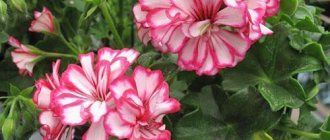Caring for orchids in general is not as difficult as it seems. It is enough to know the life cycle of these amazing tropical plants and their needs at one time or another of the year. Better yet, write it down. If you pay attention to orchids throughout the year, they will certainly delight you with lush and frequent flowering, as well as a healthy appearance. Our Orchid Care Calendar won't help you remember anything.
Life cycle features
- In autumn . When autumn arrives, the plant begins to prepare for flowering. Each variety has its own duration of this period. Flowering often lasts from October to January. The buds are formed from the formed peduncle, and then fully bloom, showing all the beauty of the flowers.
- In winter . During the cold season, the orchid hibernates. The dormant state lasts until spring. It is characteristic of all orchids growing in apartment conditions. It is not recommended to disturb the flower during this period of time, otherwise it may not have time to fully rest, and this will negatively affect its flowering.
Step-by-step instructions on how to care
Is it necessary to move the plant during the cold season?
In the fall, you should not move the plant anywhere, but in January, after flowering has finished, it is moved to a room where there is no bright light and it is well shaded. In such a place, the orchid will rest and gain strength (read about where to place and where not to keep an orchid here).
Is special feeding required?
In winter, the flower is dormant, so there is no need to fertilize . But how can you care for your pet with feeding in October? In October, fertilizing is used according to the standard scheme - nutrients are added every second watering. It is very important during this period to feed with fertilizers that contain potassium and phosphorus.
Temperature
In winter and autumn, it is necessary to maintain an optimal air temperature of +15 degrees at night and about +23..+24 during the day. Changes of 5-7 degrees are allowed. They are even needed to create favorable conditions for the formation of flower buds.
Lighting
In October, the sun's rays are no longer as hot as in summer, so the orchid can be kept on a windowsill with windows facing south. Sometimes there will not be enough daylight for good flowering . You'll have to renew it yourself. The light should be on for 12 hours.
Lighting will also be required in winter, when the plant enters a dormant period. Illumination can be provided using special or regular fluorescent lamps.
Below is an informative video about lighting an orchid in the winter months of the year:
Humidity
In autumn and winter, it must be maintained at around 45-50%. Since the heating is turned on during this period, the moisture drops to 20%, and this is unacceptable.
It increases by spraying from a spray bottle or by placing a container of water near the orchid pot.
There is an interesting and effective way that will help increase moisture:
- You need to buy transparent trays, with a height equal to one-half of the pot.
- Holes are drilled on the side, and large pebbles are placed on the bottom.
- Then water is poured into the trays.
- A plastic lattice is placed on top of the stones and a container with a flower is placed on it.
Watering
With the onset of October, the watering regime is reviewed as the temperature drops, especially at night. The soil will dry out much more slowly, so watering will be reduced. Frequent, abundant spraying and bathing of the plant are unacceptable in the fall . This can lead to irreversible consequences. Watering in October is carried out once a week. In winter it decreases even more, down to two or three times a month.
Do you need a transplant?
In winter, any transplants are prohibited. The only time to replant an orchid is in October.
Read more about the secrets and intricacies of caring for orchids at home in our material.
Lighting
When growing an orchid, caring for it in autumn and winter involves supplementary lighting. Daylight hours are provided for 10-12 hours, otherwise the plant will not set flower buds. For this purpose, fluorescent lamps with an average power of about 60 W are used. They are placed on top at a distance of 20-30 cm. With artificial lighting, the crop can overwinter away from the window.
If additional lighting is not provided, for better illumination the flower is placed on the windowsill on the south side. It will be too dark for the plant on the north window. When a crop lacks light, external signs appear: the leaves stretch out and become dull.
How to transport a flower?
In order for the flower to tolerate this procedure normally, you need to know some nuances.:
If an orchid needs to be transported and the temperature drops to 0 degrees, it is wrapped in a double layer of paper, making something like a bag. At -5 degrees, you will need not only paper, but also polyethylene. If the frost outside is about -10, then an additional underlay for the laminate is used. The orchid is wrapped in auxiliary means and fixed with a stapler.- In severe frosts, the plant is wrapped in synthetic padding and packed in a plastic bag. Thanks to multilayer packaging, a thermos effect is created.
- Once the orchid is indoors, under no circumstances should it be opened immediately - this will be a shock to the flower. To get used to the new temperatures, the orchid is left alone for 30 minutes.
Important! The flower is a heat-loving plant, so you should not stay in the cold for a long time.
We offer a visual video on how to prepare an orchid for transportation in the cold season:
Water preparation
The water for watering the orchid should be warm. It is enough to simply draw water from the tap in advance, at least a day in advance, and leave it to infuse in an open container. This will allow the water to reach a comfortable room temperature and evaporate substances harmful to plants contained in tap water. However, if the room is cool, it is better to heat the water a little so that it reaches a temperature no higher than 30 0C.
In winter, the need for fertilizing is reduced. Therefore, you should not fertilize the plant before spring. An exception may be the case when the orchid is under special artificial lighting.
Problems and difficulties
When growing an orchid at home, a gardener may encounter the following problems:
- Pests . The most common problem. To prevent the appearance of insects, it is necessary to do timely prevention, which consists of frequent wiping of leaves (up to 5 times a day) and timely replanting.
- The plant does not bloom . This problem often appears in the fall. In order for an orchid to bloom, it needs bright and diffused light, the application of fertilizers containing potassium and phosphorus, and a temperature that will differ between day and night.
- Poor lighting can cause the leaves to become small and limp, and the orchid will stop throwing out flower stalks. Experienced flower growers recommend purchasing a phytolamp and turning it on during short daylight hours. This will help the flower remain in its usual conditions.
Common mistakes gardeners make and how to solve them
Incorrect watering .
It often happens that the water has not had time to drain from the drainage hole, and the plant is already returned to its place with a tray into which the liquid continues to flow. If the window sill is cold, then the water will become the same temperature and the root system will become hypothermic. This will contribute to the development of fungal and bacterial diseases. To avoid such mistakes, you should place a piece of foam plastic on the windowsill and place a pot on top. The polystyrene foam will serve as a heat insulator that will prevent the water from cooling and the roots from rotting.- Poorly chosen place . When temperatures are high, in September and October, there is no need to place the orchid on a windowsill with windows facing south, as such an action will lead to burns. Western and eastern window sills are perfect.
- Excessively high temperature . The flower has heat strokes. This is caused by intense heat and low humidity. The first symptom is soft and limp foliage. In winter and autumn, it is strictly forbidden to place an orchid near radiators. To reduce the indicators, you can use a fan or air conditioner. Ventilate the room, but avoid drafts.
- Incorrect spraying . There is no need to spray all day. The moisture will not have time to evaporate and will begin to concentrate at the growth point, and this will lead to rotting. After some time, the outer part of the leaves will turn yellow and fall off.
It is important to care for orchids at any time of the year, both in autumn, during flowering, and in winter, when they are dormant. This will prepare it for the new period and achieve long, bright flowering. Since the orchid is a capricious flower, a lot of problems arise when caring for it. But it is important to detect and eliminate them in a timely manner.
Orchid is one of the most beautiful flowers. It is not surprising that many dream of such an acquisition. Read our experts' advice on what to do after purchasing this plant, as well as how to care for a mini phalaenopsis orchid at home and what the difference is in keeping dwarf and regular species.
Summer care
Orchids love summer very much, because in the warm season in the middle zone they feel almost at home. Almost because these plants live in the tropics and, above all, love high humidity and light shade. Therefore, plant owners will need to take extra care of their flowers at certain times of the year. But there is no need to be afraid - everything is not as difficult as it seems.
| Month | Rules of care |
| June | During the summer months, starting in June, orchids need to be watered, sprayed and fed regularly. If you haven't yet decided to plant outdoors in May, you can do so in June. In summer, the climate of the central zone is considered the most suitable for tropical orchids, so such “walks” will only benefit epiphytes. If orchids are left indoors, the room should be ventilated frequently. Air stagnation in summer is unacceptable, as it can contribute to the development of many diseases. However, the broadcast should be organized without fanaticism: it is important to prevent a draft, which is also detrimental to gentle “tropical women”. |
| July | In the middle of the summer season, the main danger for orchids is sunburn. At this time, the plants should have good shading, which protects them from damage to the leaves, but allows sufficient diffuse light to pass through. It is recommended to water and spray orchids in July only in the morning or late afternoon, but not in the middle of the day - this is the hottest time. Flowers that periodically appear on the street must be checked more often for the presence of parasites: they are more susceptible to this scourge than other specimens in the collection. It is also worthwhile to prevent fungal diseases, which most often affect orchids in the summer. |
| August | By the end of summer in the middle zone it is already quite cool at night, so it is advisable to return orchids that temporarily live in the open air back to the apartment. If the nights are not yet very cold, some frost-hardy species can be kept outdoors until the end of the month. Cymbidium and monotoglossum will forgive such treatment, since lower night temperatures are also beneficial for them - they stimulate flowering. Although August is considered the worst month for orchid flowering, the care schedule (watering and fertilizing) should be the same as in July. |











